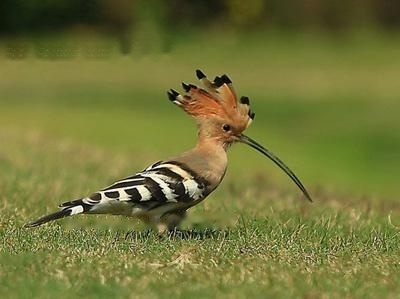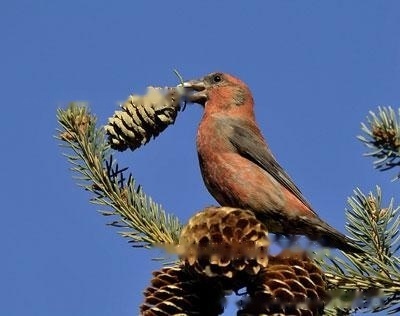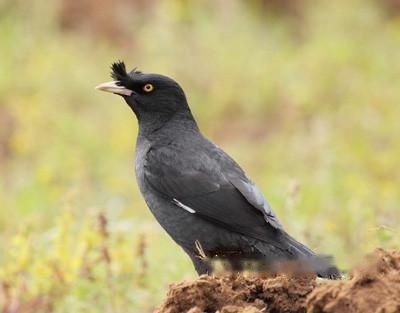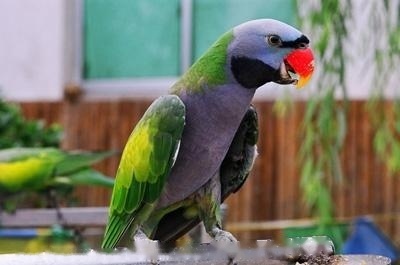Now people feedPets Birds are all intensively and meticulously raised. If there is a little abnormality, they will be very worried. Smart myna is the same for bird owners. Therefore, it is the healthiest way to prepare suitable feed according to the different growth and development periods and seasons of myna. In fact, although there are many variety feeds for birds, the method of self-prepared feed is also There are many kinds, but it boils down to the same thing. What we need to ensure is that the starling can ensure its own nutritional needs in different periods and different environments is the most important. Therefore, the feeding requirements of myna birds can be analyzed from the following nine aspects.
1. Baby myna feed [soft food]:
Description: Considering that most of the myna feed my friends are about 2, so follow the minimum configuration. After preparation, put it in the storage cabinet of the refrigerator and feed it within a week.
Half a catty of chick feed, 4 eggs (about half a catty), and 5 pieces of yeast flakes (crushed). If you add fish powder, beef and mutton powder, eggs should be reduced accordingly. Make into porridge.
Feeding: (1) In the initial stage, according to the physiological characteristics of the bird, all the food can be excreted within two hours after eating, and it can be fed several times a day. Especially at night to be well fed. (2) After about 10 days, start adding cuttlefish bone meal [or calcium tablets].
2. Feed during the feeding period:
The feed preparation at this time is basically the same as that of young starlings, and chopped vegetables or fruits can be added to the feed [add it during feeding], It is most convenient to use ketchup, which can be mixed with eggs. The number of preparations can be higher. When preparing, pay special attention to the eggs must be mixed in more than three times, and then mix after the previous feed is dry. Adding too much at one time will cause the feed particles to loosen and become powder, which will affect the feeding of the starlings.
3. Daily feed:
1 pound of chick feed, 1 egg, 5 pieces of yeast flakes (crushed), and an appropriate amount of cuttlefish bone meal.
4. Feed during moulting period:
1. Early stage: only feed chicks and reduce the quantity. It takes 4-7 days.
2. Mid-term: Increase the proportion of eggs in the "daily feed", and use 2 to 4 eggs. Also double the cuttlefish bone meal. Add two taels of peanut flour.
3. Late stage: Gradually reduce the proportion of eggs and cuttlefish bone meal, and resume daily feeding.
Five, late autumn and winter feed:
Basically the same as the daily feed, except that one egg should be added, and an appropriate amount of vegetable oil (one or two oil per kilogram of feed) or peanuts should be added. Powder two or two.
The above feeds are considered from the most economical and practical point of view, and the nutrients contained in them can meet the growth needs of the starlings. Of course, the number of birds fed at home is limited after all, and many friends do not consider scientific breeding, and always do everything possible to improve their lives and make them fatter.
Six. Selection of fruits and vegetables:
The content of minerals and vitamins in fruits is far from comparable to that of vegetables: cabbage and radish have more vitamin C than apples and pears. , Peach is about 10 times higher; green peppers and cauliflower are 2 to 3 times higher than strawberries and citrus. The vast majority of fruits are not high in vitamin C, and other vitamins are more limited. Protein content is less than 1%, almost no essential fatty acids. And due to the longer storage time, its nutrients are degraded, and it is far less fresh than vegetables. In fact, birds are also selective. If there is only fruit in the cage, the bird has no choice.
Palatability and nutrition are different concepts. Many vegetables are slightly processed for birds, which is economical and nutritious. After all, fresh vegetables are everywhere, and fruits are harvested in season.
Seven, trace elements, minerals and other supplements:
Practice has proved that starlings are omnivorous birds, and the nutrients in the feed are sufficient to meet their growth needs. The egg shells can be crushed and put in each time the feed is prepared, and some other auxiliary materials are added in special stages. There is no need to add vitamins.
8. Insist on adding yeast flakes (mother food):
This is not only to help the bird to digest, but more importantly, the yeast flakes are rich in various feeds which are lacking in nutrition. At the same time, fat-soluble vitamins can be fully absorbed by birds.
Nine, Sand:
Always put some sand in the sand tank inside the bird cage to let the birds eat freely. The free space of the bird is small, and the digestion ability is naturally reduced. All the nutrients in the feed are absorbed by the birds, and sand is the cheapest and most practical.




